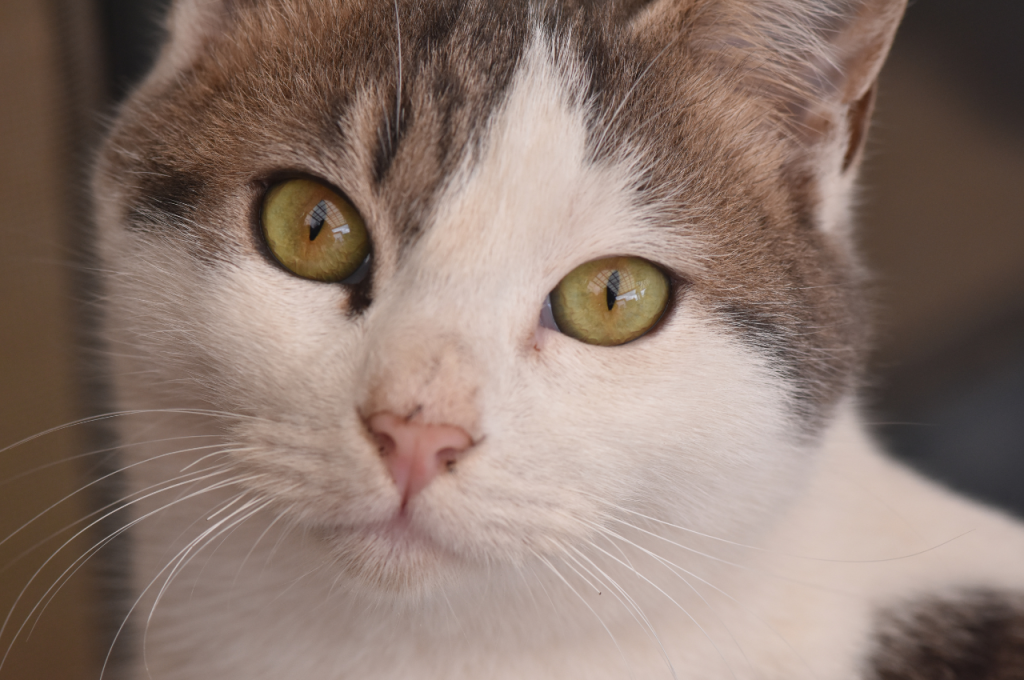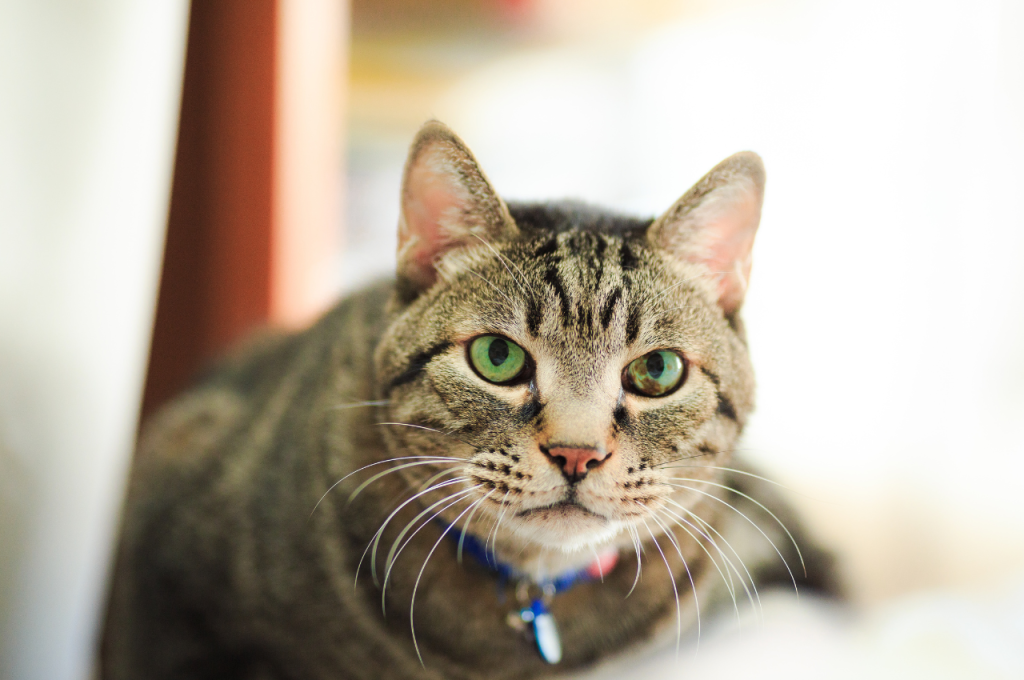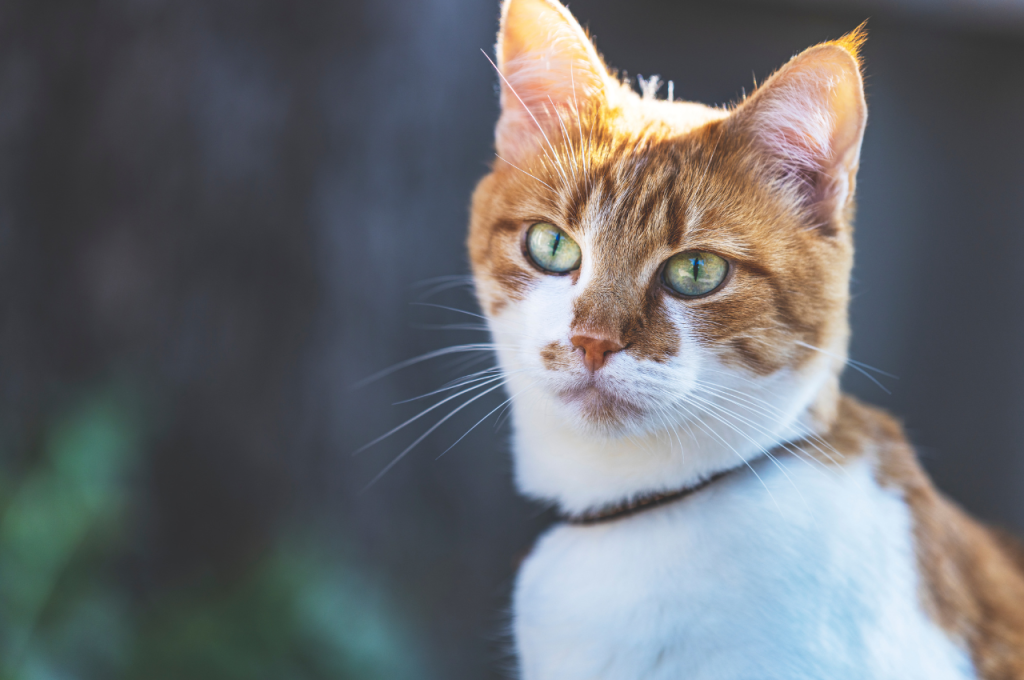Cats see color, but their perception is different from humans due to their unique eyesight capabilities. Cats see colors, but their perception of color is not the same as humans.
While humans have three types of color receptors, cats only have two, which means they can’t see the full spectrum of colors. Their vision is adapted for hunting, with a focus on detecting motion in low-light conditions. Cats are particularly sensitive to blue and yellow tones, but they struggle to distinguish between red and green.
This limited color perception is compensated by their excellent night vision and superior ability to detect movement. Understanding how cats see color is crucial for providing them with an enriching environment and appropriate toys to engage their visual senses.
The Science Behind Feline Vision
Have you ever wondered if cats see the world in the same vibrant colors as we do? As cat lovers, understanding feline vision can help us comprehend how our furry companions experience the visual world around them. Let’s dive into the fascinating world of the scientific aspects of feline vision.

Structure of A Cat’s Eye
A cat’s eye is remarkably different from a human eye, both in appearance and functionality. Cats have fascinating nocturnal predatory instincts, and their eyes are designed to aid them in hunting during low light conditions. The structure of a cat’s eye holds the key to their unique visual capabilities.
Unlike humans, cats have vertically elongated pupils that can adjust quickly in different lighting conditions. This special feature enables them to let in more light, enhancing their vision in dimly lit environments. Furthermore, cats have a specialized reflective layer behind their retina called the tapetum lucidum. This layer helps to maximize the amount of light available to their retinas, allowing them to see better in the dark.
Number of Color Receptors
While cats are not color-blind like some other animals, their color vision does differ from humans. Research has shown that cats possess fewer color receptors than humans, specifically in the cones of their retinas. These cones are responsible for detecting different colors.
Humans have three types of color receptors (cones) that allow us to see a wide range of colors. On the other hand, cats have only two types of cones, reducing their ability to perceive a full spectrum of colors. This means that cats have a more limited color vision compared to humans.
Different Types of Color Vision
While cats may have limited color vision, they compensate for it in other ways. The two types of cones found in a cat’s retina are specialized for detecting different colors. One type helps them perceive shades of blue, while the other allows them to distinguish between green and red hues. This specialized color vision enables cats to excel in differentiating various shades and contrasts within their limited color spectrum.
So, while cats may not see the world in the same vibrant colors as we do, they have adapted to have their unique kind of color vision to accommodate their hunting instincts and survival strategies.
Debunking The Myth
The debate over whether cats see in color has been ongoing for years. History is rife with misconceptions about feline vision, leading to confusion among pet owners. Let’s delve into the truth and complexities of feline color perception.
Historical Misconceptions
Cats see the world in black and white.
- Reality: Cats do see colors but not as vividly as humans.
- Similar to: Their vision is akin to a person with red-green color blindness.
Clarifying Cats’ Color Perception
Cats have a limited color range compared to humans.
| Color | Perception |
| Red | Weaker sensitivity |
| Blue | Better discrimination |
| Yellow | Blurred perception |
What Cats See
Have you ever wondered what the world looks like through your cat’s eyes? Let’s explore the fascinating realm of feline vision and uncover what cats see:
Comparison to Human Vision
Cats have a visual perception that differs significantly from humans. While we perceive a broad spectrum of colors, cats have a more limited perception and primarily see shades of blue and green. This means their world is less vibrant and detailed compared to ours.
Enhanced Night Vision
Cats possess superior night vision, thanks to a higher concentration of rod cells in their eyes. This enables them to see in low light conditions up to six times better than humans. Additionally, their pupils can dilate and adapt quickly to dark environments, giving them an advantage in nocturnal activities.
Focus on Movement and Contrast
Cats have a heightened ability to detect movement and contrast, which comes from their evolutionary background as hunters. While their color vision may be limited, their keen perception of motion and contrast allows them to track prey efficiently in various environments. This adaptation has helped them survive and thrive as skilled hunters in the wild.
Colors That Cats Can Recognize
When it comes to the question of whether cats see color, many people assume that cats can only see in black and white. However, research has shown that while not as vivid as a human’s, cats can perceive certain colors. Understanding the colors that cats can recognize can provide insight into their visual world.

Preference for High Contrast
Cats have a preference for high-contrast colors. This means they can distinguish between colors that have a significant difference in shade or brightness. For example, cats may easily differentiate between a red ball on green grass due to the stark contrast in color intensity.
Strong Response to Certain Colors
While their color vision may not be as rich as humans’, cats still have a strong response to specific colors. Research suggests that cats have a heightened sensitivity to blue and yellow hues. It’s important to note that their ability to perceive these colors may not be as detailed as humans, but they do react more strongly to these shades than others.
Sensory Abilities Beyond Color
Cats possess a fascinating array of sensory abilities that extend far beyond color perception.
Heightened Sense of Smell
Cats possess a heightened sense of smell, allowing them to detect scents that humans cannot.
Exceptional Hearing
Cats have exceptional hearing, with the ability to hear frequencies beyond the range of human ears.
Whiskers as Tactile Sensors
A cat’s whiskers act as tactile sensors, helping them navigate their environment with precision.
How Cat Vision Influences Behavior
Cat vision has a direct impact on their behavior, but do they see colors? Cats have limited color vision, with a preference for shades of blue and yellow. Understanding their visual perception helps cater their environments to their needs.
Hunting and Prey
One fascinating aspect of cat vision is its direct influence on their hunting and prey behaviors. Cats have evolved as natural-born predators, and their vision plays a crucial role in tracking, capturing, and engaging with their prey. While humans rely heavily on color vision, cats have a unique visual system that prioritizes motion detection and enhanced night vision. Their eyes are equipped with a high number of rod cells, which are responsible for detecting low levels of light and movement. As a result, cats excel at spotting smaller animals that may be invisible to our eyes.
Unlike us, cats have a visual field that spans approximately 200 degrees, allowing them to detect prey from various angles without needing to turn their heads. This wide field of vision is due to their large corneas and vertical pupils, which enhance their depth perception and peripheral vision. Furthermore, their unique ability to dilate their pupils allows more light into their eyes, enhancing visibility in low-light conditions.
Interactions with Other Cats
Cat vision also significantly influences their interactions with other cats. To communicate and establish social hierarchies, cats rely on visual cues. Their ability to detect visual signals and interpret body language is crucial for maintaining peaceful relationships with their feline counterparts. While cats may not see as many colors as we do, they can still differentiate between various shades of color, such as blue and yellow.
The vertical slits of a cat’s pupils play a vital role in their communication with other cats. When a cat is feeling aggressive or threatened, their pupils may dilate, indicating their readiness for a potential fight. On the other hand, when a cat feels relaxed or friendly, their pupils contract. By interpreting these visual cues, cats can gauge each other’s intentions and adjust their behaviors accordingly.
Response to Visual Stimuli
The unique visual system of cats also affects their response to visual stimuli in the environment. Cats are naturally curious animals, and their sharp eyesight enables them to investigate and respond to various visual cues around them. For instance, their acute ability to detect even the slightest movement makes them excellent hunters, as they can swiftly pounce on their prey.

Additionally, cats are sensitive to minute details in their surroundings, allowing them to notice even the subtlest changes. This heightened visual perception helps them remain alert and cautious in their environment, ensuring their safety and survival. They can quickly detect potential threats, such as approaching predators or unfamiliar objects, and react accordingly to protect themselves.
Frequently Asked Questions On Do Cats See Color?
Certainly! Here are some frequently asked questions (FAQs) about cats’ sensory abilities beyond color vision:
Do cats see colors in the same way humans do?
Cats do see color, but not as vividly as humans. They perceive colors on a more muted scale, focusing more on movement and contrast. Their vision is better suited for hunting in low light.
How do cat’s eyes differ from humans?
Cats have more rods in their eyes than cones, giving them better night vision but less color perception. Their reflective layer, tapetum lucidum, enhances light intake, making their eyes appear to glow in the dark.
Can cats see in total darkness?
Cats can see in low light conditions due to their specialized retina and tapetum lucidum. However, they cannot see in total darkness as they still rely on some light to navigate effectively. Their eyes have evolved for nocturnal hunting.
Conclusion
In the colorful world of cats, their vision may surprise you. Despite limitations, cats see colors differently but adapt well. Understanding how cats perceive the world adds depth to our interactions.
Keeping their unique vision in mind enhances our bond with these mysterious feline companions.
